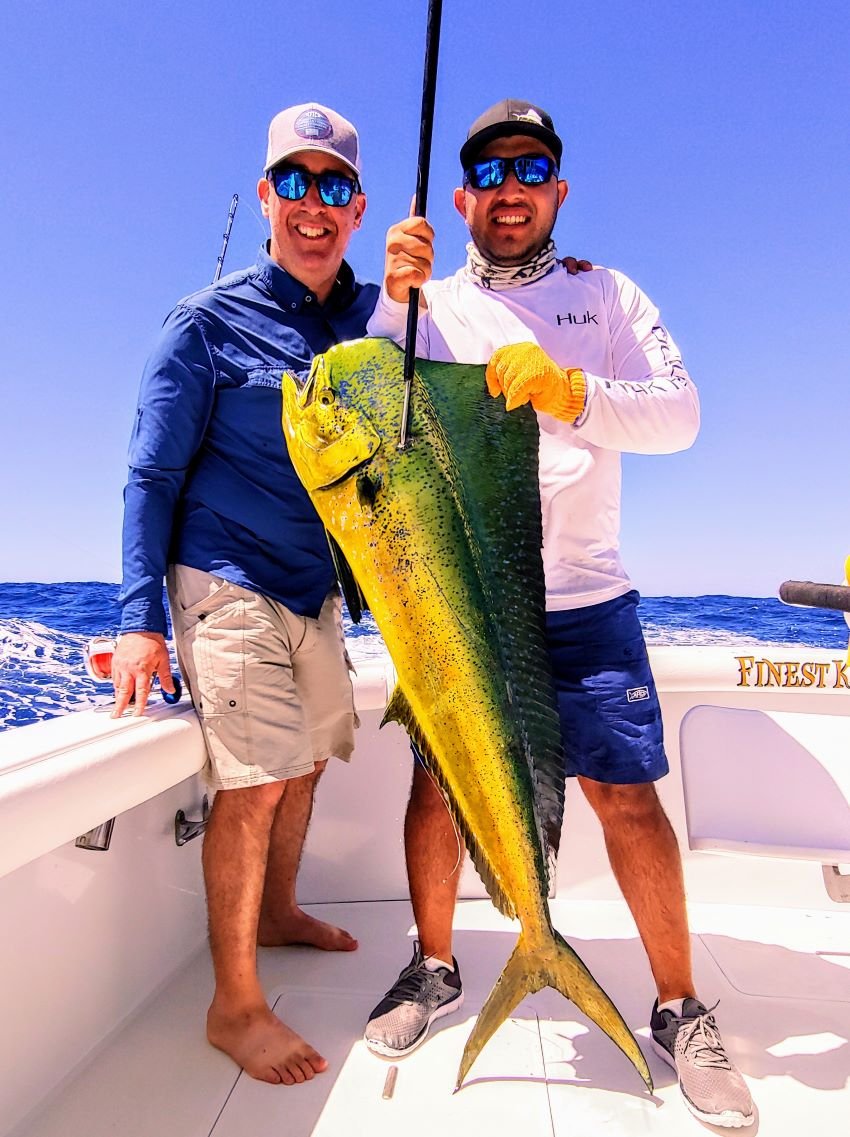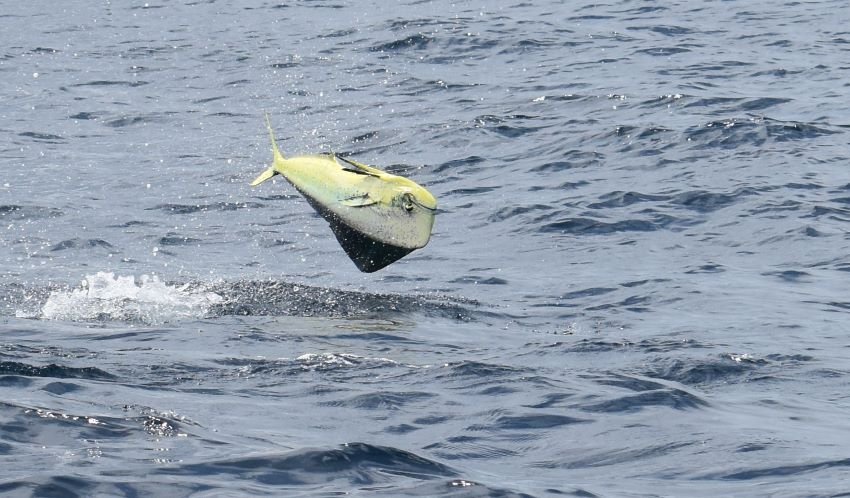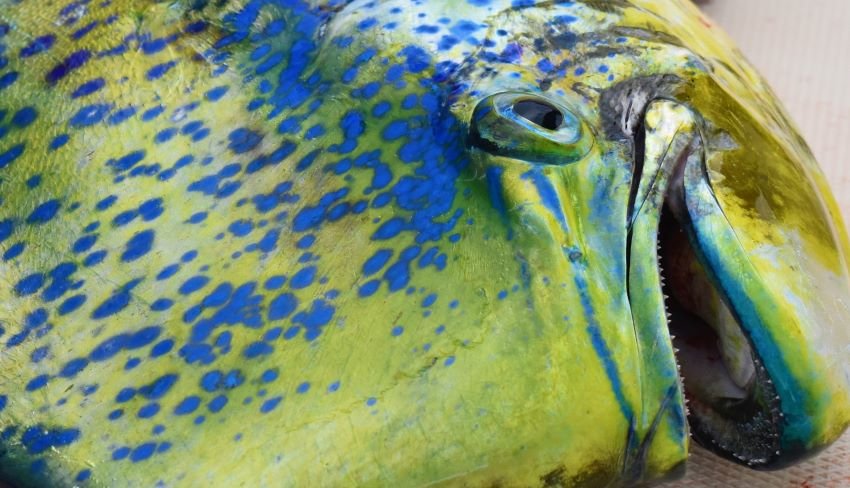Is Mahi Mahi the World’s Best Gamefish in the World? We did our research in Panama and Guatemala
Every angler has his or her favorite gamefish. Perhaps it’s the one they chase the most, or one they’ve never even chased but dream of capturing. Tarpon and billfish and of course largemouth and smallmouth bass are at the top of many lists. Sometimes they’re there for articulable reasons. Other times it’s “just because.”
By my best estimate I’m nearing 100 species on my life list. Some, like largemouths, are common. Others, like tigerfish, are less widely-caught. Still others, like the peacock bass of the Amazon, are desirable for many obvious reasons. But of all the ones that I’ve caught – and the many more that I have not – I think that the mahi mahi (also known as “dorado” and also the unfortunate and confusing “dolphin”) may be the greatest gamefish alive when you consider a vareity of factors. I’ve caught quite a few — mostly in the Central American countries of Guatemala, Panama and Costa Rica — and hope to chase many more before I make my last cast. The following is my explanation for why they may be the best:
Why Mahi Mahi May Be the Best Gamefish
Beauty – In the water they glow, but even on their jumps and when you first get them into the boat, every one is a gorgeous piece of neon, a sea of greens and blues and yellows, with no two anywhere near the same.
Jumping Ability – Every mahi I’ve caught has jumped, usually completely out of the water and then some. They cartwheel, they catapult and they somersault, and then they do it again.
Strength – They’re not as strong pound for pound as a yellowfin tuna, and perhaps not even as strong as a smallmouth bass, but they’re no shrinking violet, either.
Omnivorous – They’re not indiscriminate eaters, but they eat a variety of natural baits, flies and lures, including topwaters. To my mind, any fish that’s not likely to hit a topwater is immediately excluded from the running for “best ever.”
Locale – They tend to live in the bluest water, in beautiful places. That’s a plus.
Big Enough to Eat My Bait, Big Enough to Make My Plate – Mahi mahi are remarkably delicious, either fried as “fingers,” simply grilled, or as ceviche. I’m big on catch and release where appropriate, but mahi are generally prolific enough (see below) that it doesn’t hurt to keep a handful for the table.
Size Matters – The all-tackle world-record is 87 pounds (caught in the Gulf of Papagayo in Costa Rica) and bulls in the 30-, 40- and 50-pound range are not uncommon.
How many other fish can you think of that meet all of those criteria? The ones that come to mind immediately for me are peacock bass, tarpon and sailfish, none of which are edible or should be eaten.
Four Factors That We Think Enhance the Case for Mahi
I believe that these next four factors provide further support at least for the notion of the mahi as the “everyman” greatest gamefish. Anglers who require great seclusion, or incredible rarity, as factors in their decisions may disagree, but this is my article, so bear with me.
They Tend to Travel in Packs – If you catch one mahi mahi, there’s a pretty good chance you’ll catch several. The smaller ones in particular seem to travel in massive numbers. In Guatemala, when we hooked a small one we kept him in the water so the others would remain interested and we could all hook up.
They’re Predictable – Pass a massive floating log or some other piece of flotsam in prime territory? You better stop if you want mahi for lunch. In the otherwise open ocean even smaller logs can serve as mahi magnets.
They Reproduce Prolifically – They spawn multiple times per year, with females releasing 80,000 to 1,000,000 eggs per spawning cycle. They are sexually mature by 5-6 months, which is important because they tend not to get old – rarely exceeding five years – which speaks to how incredibly quickly they grow and how much food they have to consume to do so.
They Live All Over the Place (except Kansas) – Sorry to you landlocked folks, but if you have access to a coast in a reasonably temperate to warm zone, you probably have mahi nearby. That includes the Indian Ocean as well as much of the Atlantic, and of course Central America.
Cumulative Greatest Gamefish Scoring System
My back-of-the-napkin scoring system takes all of these factors into account and spits out a superlative ranking. Of course, if you just care about the size of a fish, or how hard it fights, or its rarity and beauty and taste and jumping don’t matter, you may disagree. I’ll just keep on catching mahi. I’ll also try to remember how much I love them when they show up while I’m fishing for something else.
If chasing mahi mahi sounds like your kind of adventure, join us on a hosted trip to Casa Vieja Lodge in Guatemala or Sport Fish Panama Island Lodge on Panama’s Pacific coast. These fisheries offer world-class action and the chance to experience why so many anglers call mahi mahi the greatest gamefish in the world. Email any time for more information.









